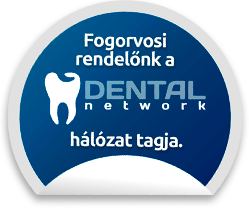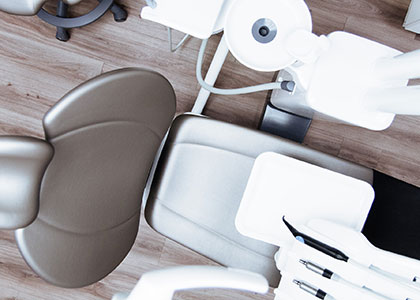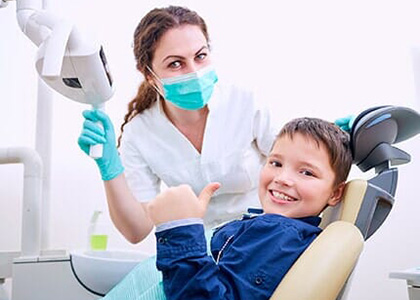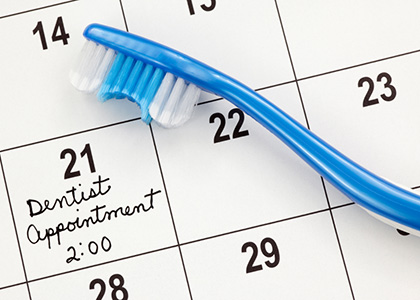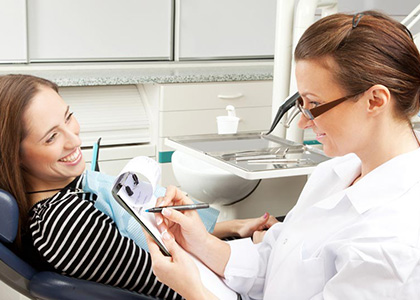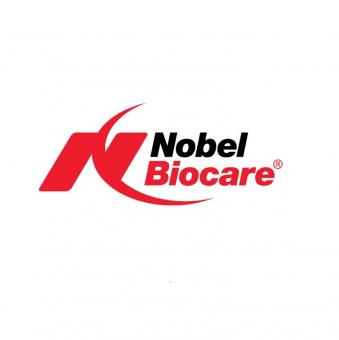Angular Cheilitis: Prevention, Causes, and Effective Treatment
Angular cheilitis, often mistaken for cold sores, can be caused by many factors. The cracking at the corners of the mouth is often simple to treat with a little care. However, if the problem recurs, it may be advisable to consult a doctor or dermatologist. Here’s everything you need to know about angular cheilitis: what causes it, how can it be prevented, and how is it treated?
What is Angular Cheilitis?
Angular cheilitis refers to inflammation at the corners of the mouth where the upper and lower lips meet. This condition is characterized by irritation such as sores or cracked skin at this location.
Various factors can lead to cracked corners of the mouth, such as:
Skin drying out due to cold weather
Poor oral hygiene leading to fungal infections
Bad habits like biting or licking the lips
Viral infections or sensitivity due to illness
Injury to the mouth corners
Nutritional deficiencies In children, sores at the corners of the mouth often develop from sucking on pacifiers or fingers. In older adults, tooth loss and sagging skin can pose problems. "Cracked lips" are common when the lips overlap, preventing proper air circulation between them.
Causes of Angular Cheilitis Cracking at the mouth corners can develop quite easily. Usually, this minor injury becomes problematic. The small wound becomes inflamed, the immune system cannot handle the new attack surface, and bacteria or fungi proliferate in the area.
The pain at the mouth corners is typically due to a small wound caused by micro-trauma, drying and cracking of the skin, or even an accidental bite. This injury usually heals quickly and responds well to various ointments and moisturizing products.
The problem becomes more serious when micro-injuries become infected, leading to redness, and possibly oozing, crusting sores. This symptom is usually the result of an infection, most often caused by fungi or bacteria.
Angular cheilitis may also appear alongside other illnesses, such as the flu. In such cases, the weakened immune system cannot effectively heal the cracked mouth corners.
Cheilitis encompasses these inflammatory conditions affecting the lips and corners of the mouth. These issues can have numerous causes and are multifactorial, but the mechanism behind the disease's development is generally very similar. Some causes we've already mentioned, but to summarize, common causes of angular cheilitis include:
Dermatitis
Nutrient deficiencies (primarily deficiencies in B vitamins, zinc, and iron)
Allergic reactions
Increased sensitivity to sunlight
Dry mouth
Poorly fitted or worn dentures or braces, poor hygiene
Distortion of the lower face due to tooth loss or wear
Skin sagging
Smoking, alcoholism
Compulsive habits (licking or biting the lips, constant chewing gum)
In young children, thumb sucking and pacifier use, and their poor hygiene
Cold and windy weather (leading to dried, cracked lips)
Who is Most Affected by Angular Cheilitis? Angular cheilitis particularly threatens infants and older adults: mainly because several factors necessary for the disease's development may be present simultaneously. Others at higher risk include:
Those with malabsorption disorders
Those who eat a unilaterally, nutritionally deficient diet
Those who breathe through their mouths (e.g., due to constant nasal congestion)
Those taking medications that cause dry mouth or increased saliva as a side effect
Frequent users of antibiotics or corticosteroids
Those with a weakened immune system or chronic, long-term illnesses
Given these factors, many acquired or congenital problems and diseases can accompany angular cheilitis as a symptom. These include gastrointestinal absorption disorders (e.g., Crohn's disease), deficiencies (e.g., anemia), autoimmune issues (e.g., Sjögren's syndrome), eczema, diabetes, cancer, respiratory allergies, chronic upper respiratory issues, and even sleep apnea.
Symptoms of Angular Cheilitis The symptom of angular cheilitis is usually redness and pain or itching in the affected area. In children, it is observable that they constantly fiddle with, lick the edges of their mouths, or open them wide to irritate and “scratch” the inflamed part.
A sore at the edge of the mouth doesn’t automatically mean inflammation, but it indicates that it’s advisable to treat the affected area. At this stage, a regenerating, moisturizing product and keeping the mouth clean can still prevent the problem. More unpleasant is when the area becomes inflamed. In adults, this usually involves redness, scaling, warmth, swelling. In children, intense redness, often visible on the face, drying out, peeling, and oozing of the surface may indicate trouble.
Summary of common symptoms:
Cracking of the skin at the corners of the mouth
Itching
Pain
Redness, swelling, and increased sensitivity of the affected area
Thickening of the skin, possibly thick, hard scars that may burst
Bleeding, oozing at the corners of the mouth
Unpleasant taste in the mouth
If an infection has developed, the sores at the mouth corners may also appear yellowish or whitish
Diagnosing Angular Cheilitis In children, a health visitor or pediatrician can usually determine the cause of the problem and initiate treatment for cracked lips. If the inflammation does not resolve with creams, antiseptics, and attention (e.g., disinfecting pacifiers), a dermatologist should examine the area next.
In adults, home treatment for cracked mouth corners is usually successful since they can maintain better oral hygiene. However, if symptoms frequently recur, they should also consult a dentist and a dermatologist. They may take a tissue sample or swab from the area to determine the exact pathogens involved.
How Angular Cheilitis Develops The inflammation of the mouth corners is a slowly developing disease, and the intensity of symptoms highly depends on external and internal factors. It may occasionally improve slightly, but at other times it continuously worsens, showing a fluctuating trend. The emerging sore can become significantly aggravated by certain foods, cold and windy weather, or even sunlight. Environmental factors can further irritate the sore, to which the patient's unconscious response might be licking the lips or picking at the sores.
Picking, biting, or scratching the affected surfaces significantly increases the risk of superinfection, as pathogens can more easily enter the body through small injuries.
Complications of Angular Cheilitis With proper therapy, angular cheilitis is a very manageable disease. However, it is necessary not only to deal with the symptoms but also to uncover and address the underlying causes. Of course, since the causes can be varied, it also varies individually when someone will recover, whether complete recovery can be expected, or if it is likely that the inflammation will recur from time to time.
Treatment of Angular Cheilitis For treating angular cheilitis, creams or antiseptics are most often used. If dealing with severe inflammation, it may be necessary to first disinfect the mouth corner, then apply an ointment that prevents bacteria from reaching the skin, forming a sort of flexible protective layer.
In very severe cases, oral antibiotics may be prescribed by the doctor, and creams and antiseptics should be used in a way that supports each other's effects – therefore, in such cases, a specialist's opinion is definitely needed.
Treating a sore at the edge of the mouth cannot be adequate without examining and eliminating the causes of its formation. Strengthening the immune system and supplementing vitamins can prevent the recurrence of angular cheilitis in the long term.
When to See a Doctor? - Serious Signs and Complications If home treatment of angular cheilitis does not result in improvement after a few days, it is essential to seek professional help, as prescription medication may be needed beyond over-the-counter products. Steroid creams or antifungal agents might be suitable for treatment, but these are prescribed by a doctor, and the exact cause of the disease must be determined before treatment.
It is also advisable to consult a doctor if the symptom frequently recurs. In these cases, a vitamin deficiency or an infection that may affect the entire body could be underlying, so it is important to determine why the immune system is not functioning properly.
Prevention and Care: How to Protect Oral Health? The first step in preventing cracked mouth corners is regular cleaning and moisturizing of the skin. Wash your face regularly, use a napkin after eating, and make sure to remove any toothpaste or food residue from the corners of your mouth!
Various moisturizing products can help prevent skin drying out! In cold weather, during sports, or while hiking, use protective cream or balm! Pay attention to sun protection as well!
In addition to external care, it is important to pay attention to internal health. Strengthen the immune system, ensure adequate vitamin intake, and address any dental problems!
What Can We Do at Home Against Angular Cheilitis? With a few simple home remedies, you can effectively combat the uncomfortable symptoms associated with inflammation at the edges of the mouth. However, before applying any of these, discuss them with your doctor or pharmacist! Home remedies cannot replace medical examination and drug therapy!
Apply honey to the inflamed mouth corner! Honey has soothing effects and helps fight infections.
The gel squeezed from an aloe vera leaf may have similar healing effects.
Cleaned, cooled cucumber also has soothing and moisturizing effects.
Simple, pure petroleum jelly or coconut oil can help protect the skin from the irritating effects of saliva.
Frequently Asked Questions About Angular Cheilitis What can be done in children with cracked lips? It is advisable to wean off pacifiers and thumb sucking, but this cannot be achieved overnight. Besides external treatment and cream application, proper hygiene, frequent hand washing, and pacifier disinfection are very important in children. How can you distinguish between cold sores and angular cheilitis? Cold sores usually involve the formation of small blisters, the bursting of which results in a sore at the edge of the mouth. What products can be used for angular cheilitis? Products containing vitamin A are generally very effective, but since the symptoms can be caused by various factors, it is advisable to consult a doctor or pharmacist about treatment. Is angular cheilitis contagious? No, angular cheilitis is not a contagious disease; the inflammation at the corners of the mouth cannot be contracted from another person. Should any foods or drinks be avoided in the case of angular cheilitis? No special diet is necessary, but there are a few things to keep in mind. Since inflammation at the corners of the mouth can sometimes be traced back to deficiencies, ensure the diet is rich in vitamins and minerals and varied. It is also important to drink enough water! It is advisable to avoid spicy, overly acidic foods during recovery, as these can further irritate the already sore lips.
Angular cheilitis is an uncomfortable and painful symptom, and if it is a recurring problem, it definitely requires treatment. Protect your health and do not forget regular dental and medical check-ups. Angular cheilitis can easily occur, but it is not inevitable that it will recur in those who have experienced it once. If you need professional help, visit your doctor as soon as possible, before more severe consequences and complications develop!
If you are struggling with angular cheilitis, call us directly at +36 1 550 7 550.
